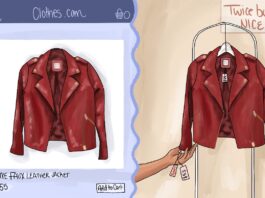Clowns, heights, spiders, and snakes— pop culture has its favourite iconic phobias, and no one understands their fascination better than the horror film industry.
Take Stephen King’s It (1990), where an alien takes on the form of its victim’s worst fear, appearing in the form of the sadistic clown who calls himself “Pennywise the Dancing Clown” or the claustrophobia-inspiring Devil (2010) starring five people trapped in an elevator with the devil, as he kills them off one by one.
“Often the iconography of these phobias gets inserted into the horror cinema to create a sort of atmosphere,” said Shyla Fairfax, who is in her first year of Carleton’s masters in film program.
“More often,” she explained, “it’s only there to create an atmosphere–to create jump scares, but it’s more the story itself that tends to be where the fear comes from.”
Main characters who struggle with fear themselves are not uncommon. “I think it’s used as a device to keep the audience relating to the character,” Fairfax said. “It really humanizes them — there’s just this vulnerability about that could come back on them at any moment.”
Detective John “Scottie” Ferguson for example, in Alfred Hitchcock’s Vertigo (1958) has a crippling phobia of heights.
“With Vertigo, that’s exactly what happens,” Fairfax said. “He tries so hard to save that woman but in the end, his vertigo takes over and she dies . . . although that’s a false ending…In Marnie (1964), another Hitchcock film, Marnie has, what appears to be an irrational fear of thunderstorms— but by the end of the film we find out the story behind it, why she’s afraid of them, and she is eventually cured.”
“As far as the audience goes, we end up being more on edge because we know that these characters have some internal flaw that could make them fail at their mission or not survive to the end,” she said.
These internal flaws and a very real possibility of failure as well the sinister hints from iconography are what keep the audience on the edge of their seats, convinced of impending doom, a trait that distinguishes horror films from less heart pounding genres.
“For character development it’s about vulnerability, and in the horror cinema itself, that’s really important —because otherwise, it’s just a superhero movie,” Fairfax said.
Horror films are also brilliant at exploiting our silliest childhood fears. A film like Guillermo del Torro’s Mama (2013) seems to justify our most irrational fears of monsters when Mama attacks from her hiding place beneath her bed, just as the woman turns to ask, “What’s under the bed?”
“We remember being afraid of what’s under the bed, or creepy shadows in our bedroom, things like that,” Fairfax said. “I think it intensifies these fears— it brings them back what we thought we had gotten over.”
Fairfax said that it is this vulnerability that the industry so skillfully manipulates to draw an audience into the horror cinema. “I think with the cinema what’s interesting is that you get a really nice balance between reality and fantasy,” she said. “It gives people a safe place where they can explore these phobias and confront them at a safe distance.”



